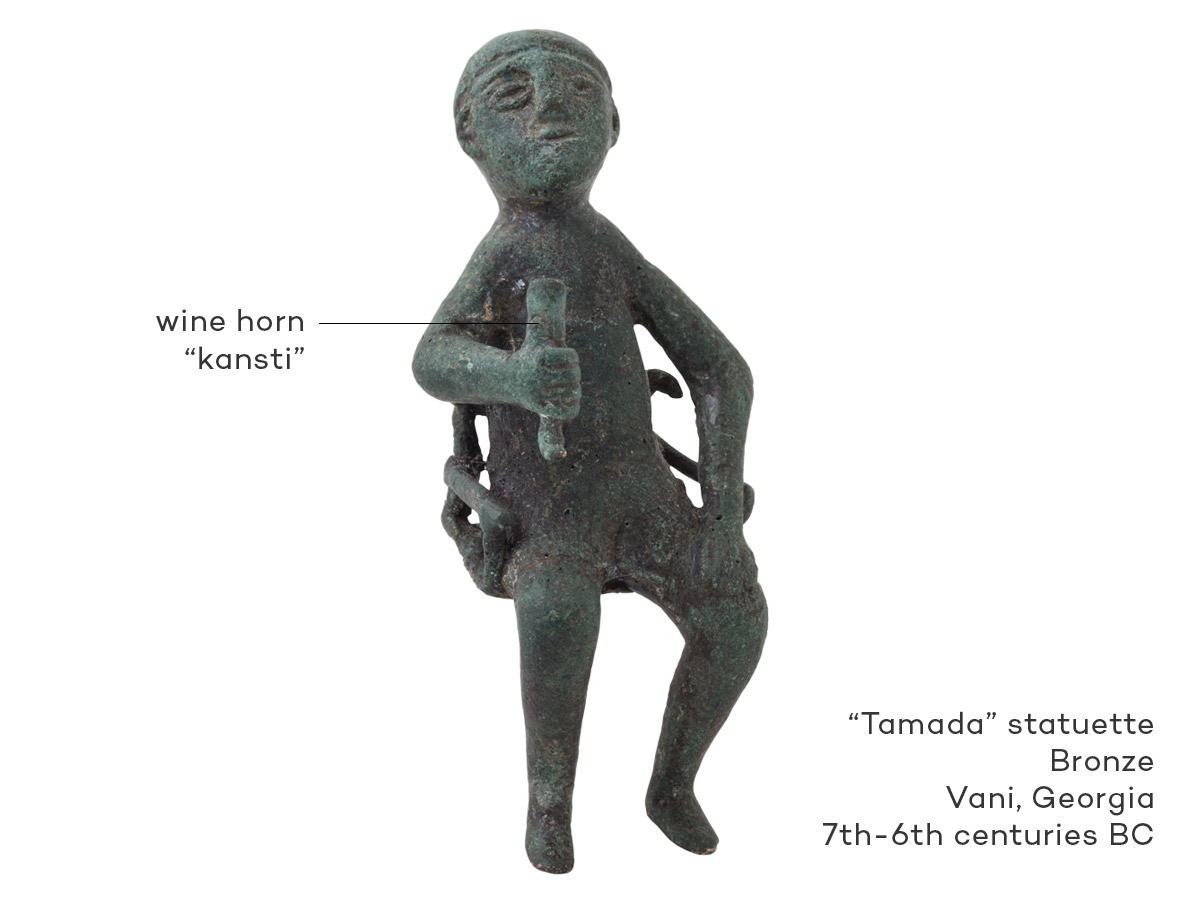You mean to tell me that toasting (a highlight of wedding celebrations) is pagan?
Pre-Christian yes, but calling it pagan seems a bit heathen.
Here’s a brief history of the tradition of toasting.
The pagan origins of toasting
The tradition of toasting hails back to ancient Georgia. (The Country!) The discovery of a bronze tamada, or “toastmaster,” places the practice back to around 500–700 BC. This was before the development of the Georgian written language (Kartvelian). Back then, the Colchis Kingdom ruled a large chunk of Georgia. These people were talented metal smiths, particularly with gold, which is likely why the Greek myth of Jason and the Golden Fleece took place here.
But wait, there’s more!
Georgian wines were drunk from horns called kansti. photo Georgian National Museum/Mirian Kiladze
What’s cool, is the toasting artifacts are from the very same area where wine is thought to have originated. So, these guys were toasting with wine. Not beer.
The Toastmaster or Tamada
Toastmasters are still an important facet of modern Georgian and Azerbaijani gatherings. In particular, the tamada is the keystone of the Georgian feast, supra, which means “table cloth.” By the way, a supra that keeps with tradition almost always includes a table cloth. (Even if there is no table!)
A outdoor supra at the Batsara Nature Preserve in 2009. by Scott McDonough
The tamada’s role is like the “hype guy” of the feast. The person who plays the role of tamada should possess exceptional oratory skills and the ability to read the audience. Their primary goal is to create shared experiences with captivating toast speeches.

A proper Georgian toast goes something like this:
- The tamada proposes a toast and then drinks their entire glass of wine.
- Then, the next guest proposes a toast to someone else and subsequently, drains their glass.
- Partakers in the toasting hold their glasses high and drink after each toast.
It may sound like a drunken affair, but in most settings it’s considered disgraceful for a tamada to become drunk. Of course, how a tamada actually pulls this off is still a mystery to us!
So, how does one give a perfect toast?
Naturally, this intriguing historical finding made us wonder: what makes a great toast? And, why are we not toasting – like – all the time?

